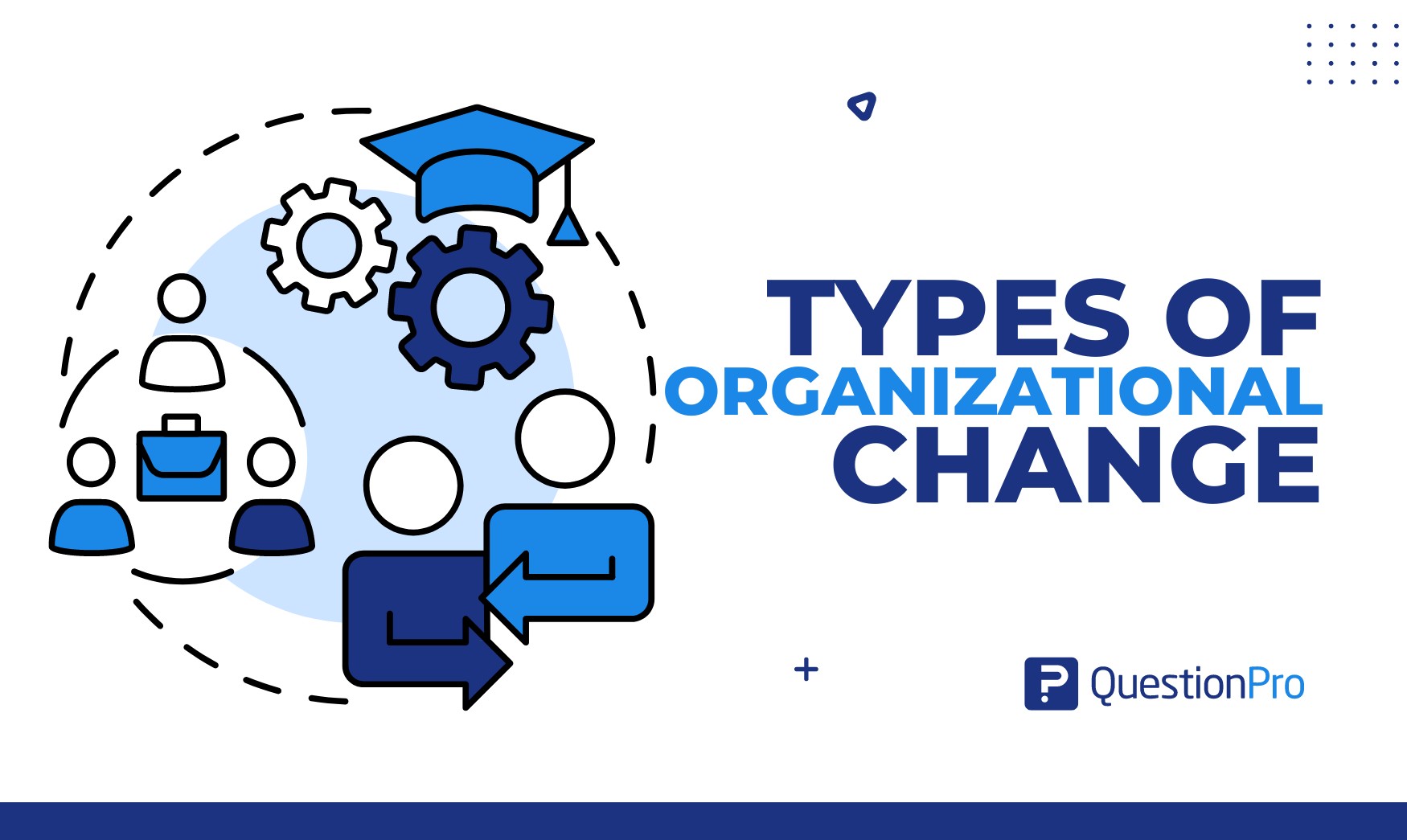
Organizations need to adapt to survive and thrive in today’s rapidly evolving business environment. This adaptation often involves organizational change. That allows companies to redefine themselves in response to new challenges, opportunities, and technological advancements.
But what exactly does organizational change entail, and how can businesses navigate this complex process effectively? As Charles Darwin’s famous quote suggests, “It is not the strongest of the species that survives, nor the most intelligent, but the one most adaptable to change.”
In this blog, we’ll explore the concept of organizational change, why it’s essential, strategies for successfully implementing change, and the various organizational change initiatives that can reshape a company’s future.
What Is Organizational Change?
Organizational change refers to any alteration in a company’s operations, including changes to its strategies, structures, processes, or culture. These changes can be small-scale or large-scale and impact various business processes.
The primary goal is to improve efficiency, align with market demands, or capitalize on new opportunities. Organizational change can stem from various sources, such as technological advancements, market dynamics, regulatory updates, or shifts in consumer preferences.
In practice, managing organizational change might involve:
- Restructuring teams and departments.
- Implementing new technologies or processes.
- Shifting the company culture to align with new values or goals.
- Merging with or acquiring other businesses.
- Expanding into new markets or product lines.
The success of organizational change hinges on meticulous workforce planning, flawless execution, and adept management of the process. This approach is crucial in minimizing disruptions and maximizing positive outcomes.
Why Is Organizational Change Important?
Organizational change is critical for businesses to remain competitive and relevant. Here are several reasons why organizational change is important:
- Adaptability: The business landscape is constantly evolving due to technological advancements, market dynamics, and regulatory changes. Organizational change enables companies to adapt to these shifts and stay ahead of the competition.
- Innovation: Change encourages innovation by promoting a culture of continuous improvement. It allows organizations to develop new products, services, and processes, which can lead to increased market share and profitability.
- Efficiency: By re-evaluating and restructuring processes, organizations can eliminate inefficiencies, reduce costs, and improve overall performance. This is especially important in a global economy where margins can be tight.
- Employee Engagement: Change initiatives can boost employee engagement by providing opportunities for personal and professional growth. Engaged employees are more productive, loyal, and motivated to contribute to the organization’s success.
- Resilience: Organizations that embrace change are better equipped to handle crises and disruptions. This resilience ensures long-term sustainability and the ability to capitalize on new opportunities.
Strategies for Successful Organisational Change
Successfully implementing organizational change requires a strategic approach. Here are key strategies to consider:
Clear Vision and Objectives:
- Establish a clear vision for the change initiative and communicate it effectively.
- Define specific, measurable objectives that align with the overall strategic goals.
Stakeholder Engagement:
- Identify all stakeholders affected by the change, including employees, customers, suppliers, and investors.
- Engage stakeholders early to gather input, address concerns, and build buy-in.
Effective Communication:
- Develop a comprehensive communication plan to inform everyone about the change process, benefits, and progress.
- Use multiple channels to reach different audiences and ensure the message is consistent and transparent.
Training and Support:
- Provide training and development programs to help employees acquire the skills and knowledge needed to adapt to the change.
- Offer support resources, such as coaching and mentoring, to assist employees during the transition.
Leadership Commitment:
- Ensure that leadership at all levels is committed to the change and actively participates in the process.
- Leaders should model the desired behaviors and act as change champions to inspire and motivate others.
Monitor and Adjust:
- Continuously monitor the progress of the change initiative and gather feedback from stakeholders.
- Be prepared to adjust based on feedback and changing circumstances to keep the initiative on track.
Celebrate Successes:
- Recognize and celebrate milestones and successes throughout the change process.
- Celebrating achievements helps to maintain momentum and reinforces the positive aspects of the change.
What Are the Types of Organizational Change Initiatives?
Organizational change initiatives vary widely, depending on the company’s goals and challenges. Here are some common types of organizational change:
1. Strategic Change
Strategic change involves altering an organization’s goals, purpose, or mission. It often requires redefining the company’s long-term vision, aligning resources, and making high-level structural adjustments to stay competitive.
Examples:
- Shifting from a product-based to a service-based business model.
- Entering new markets or regions.
- Mergers and acquisitions.
2. Structural Change
Structural change focuses on modifying an organization’s internal framework. This can include changing organizational hierarchies, job roles, or department structures to improve efficiency and communication.
Examples:
- Implementing a matrix organizational structure.
- Centralizing or decentralizing operations.
- Restructuring teams for better collaboration.
3. Technological Change
Technological change involves integrating new technologies into an organization’s operations to improve productivity and competitiveness. This type of change is often driven by advancements in digital tools and the need to keep up with technological trends.
Examples:
Adopting cloud computing solutions.
Implementing automation in manufacturing processes.
Upgrading IT infrastructure.
4. Cultural Change
Cultural change aims to transform the underlying beliefs, values, and behaviors that define an organization’s culture. This type of change is essential when the existing culture hinders growth or adaptation to new business realities. Cultural change initiatives are often necessary to address financial or emotional turbulence within an organization.
Examples:
- Promoting a culture of innovation and risk-taking.
- Enhancing diversity and inclusion.
- Shifting from a hierarchical to a more collaborative work environment.
5. Process-Oriented Change
The process-oriented change focuses on improving an organization’s internal processes and workflows. This change aims to enhance efficiency, reduce costs, and improve service delivery.
Examples:
- Implementing lean management techniques.
- Streamlining supply chain operations.
- Enhancing customer service procedures.
6. People-Centric Change
People-centric organizational change revolves around managing changes that directly affect employees, such as changes in roles, skills, or work environments. This type of change is crucial for organizations undergoing significant transformations.
Examples:
- Implementing new training and development programs.
- Reskilling employees for new job roles.
- Enhancing work-life balance policies.
What are the Main Types of Organisational Change?
While organizational change initiatives can be diverse, they can be broadly categorized into two main types:
1. Incremental Change
Incremental change refers to minor adjustments to improve existing processes or structures. These changes are often continuous and aim to enhance efficiency without causing significant disruption.
Characteristics:
- Low risk and less resistance from employees.
- Easier to implement and manage.
- Focus on continuous improvement.
Examples:
- Minor updates to software systems.
- Regular process optimization efforts.
- Gradual enhancement of customer service practices.
2. Transformational Change
Conversely, transformational change involves significant shifts fundamentally altering an organization’s operations or culture. These changes are often radical and may be necessary to respond to external pressures or internal inefficiencies.
Characteristics:
- High risk and potential for resistance.
- Requires comprehensive planning and execution.
- Aims for substantial improvement or competitive advantage.
Examples:
- Company-wide digital transformation initiatives.
- Complete business model overhaul.
- Large-scale mergers or acquisitions.
How to Utilize QuestionPro Workforce for Defining the Types of Organizational Change?
Organizational change is crucial for growth and adaptability. QuestionPro Workforce can be a powerful tool in defining and managing these changes. Here’s how to effectively use it:
1. Conduct Comprehensive Surveys
Begin by conducting surveys to gather insights from employees across all levels. QuestionPro Workforce allows you to design tailored surveys to identify areas needing change. Include questions about current processes, technological needs, cultural aspects, and structural efficiencies.
2. Analyze Employee Feedback
Leverage QuestionPro’s advanced analytics to interpret survey results. This analysis helps pinpoint the changes required.
- Strategic,
- Structural,
- Technological,
- Cultural, or
- Process-oriented.
For example, feedback on outdated technology can highlight the need for technological change.
3. Identify Key Change Drivers
Use the data to identify key drivers for change. QuestionPro Workforce’s reporting tools can help visualize trends and pinpoint areas where change is most needed. Understanding these drivers allows you to prioritize initiatives effectively.
4. Engage Stakeholders
Engage stakeholders by sharing survey findings and analysis. QuestionPro Workforce facilitates easy sharing of reports and data visualizations, ensuring all key stakeholders understand the necessity and scope of the proposed changes. This engagement is crucial for gaining buy-in and support.
5. Monitor Progress
Implement changes and use QuestionPro Workforce to monitor their impact. Continuous feedback through follow-up surveys can track progress and employee sentiment, allowing for real-time adjustments. This ensures that the changes are effective and aligned with organizational goals.
6. Foster a Culture of Continuous Improvement
Encourage a culture of continuous improvement by regularly utilizing QuestionPro Workforce. Periodic surveys and consistent feedback loops help maintain momentum and adaptability, ensuring the organization evolves in response to internal and external changes.
Conclusion
Organizational change is an inevitable part of business growth and development. Understanding the various types of organizational change —strategic, structural, technological, cultural, process-oriented, or people-centric—can help organizations navigate the complexities of transformation.
By implementing an effective organizational change management strategy and creating a culture of adaptability, businesses can successfully embrace change and position themselves for long-term success.
Whether dealing with incremental improvements or transformational overhauls, embracing change with a clear strategy and a commitment to progress is key to thriving in today’s dynamic business landscape.
Utilizing QuestionPro Workforce equips organizations to navigate and manage change effectively. By conducting detailed surveys, analyzing feedback, and engaging stakeholders, you can identify and address key areas for improvement.
This strategic approach creates a culture of continuous improvement, ensuring your business remains agile and competitive in a dynamic environment.







